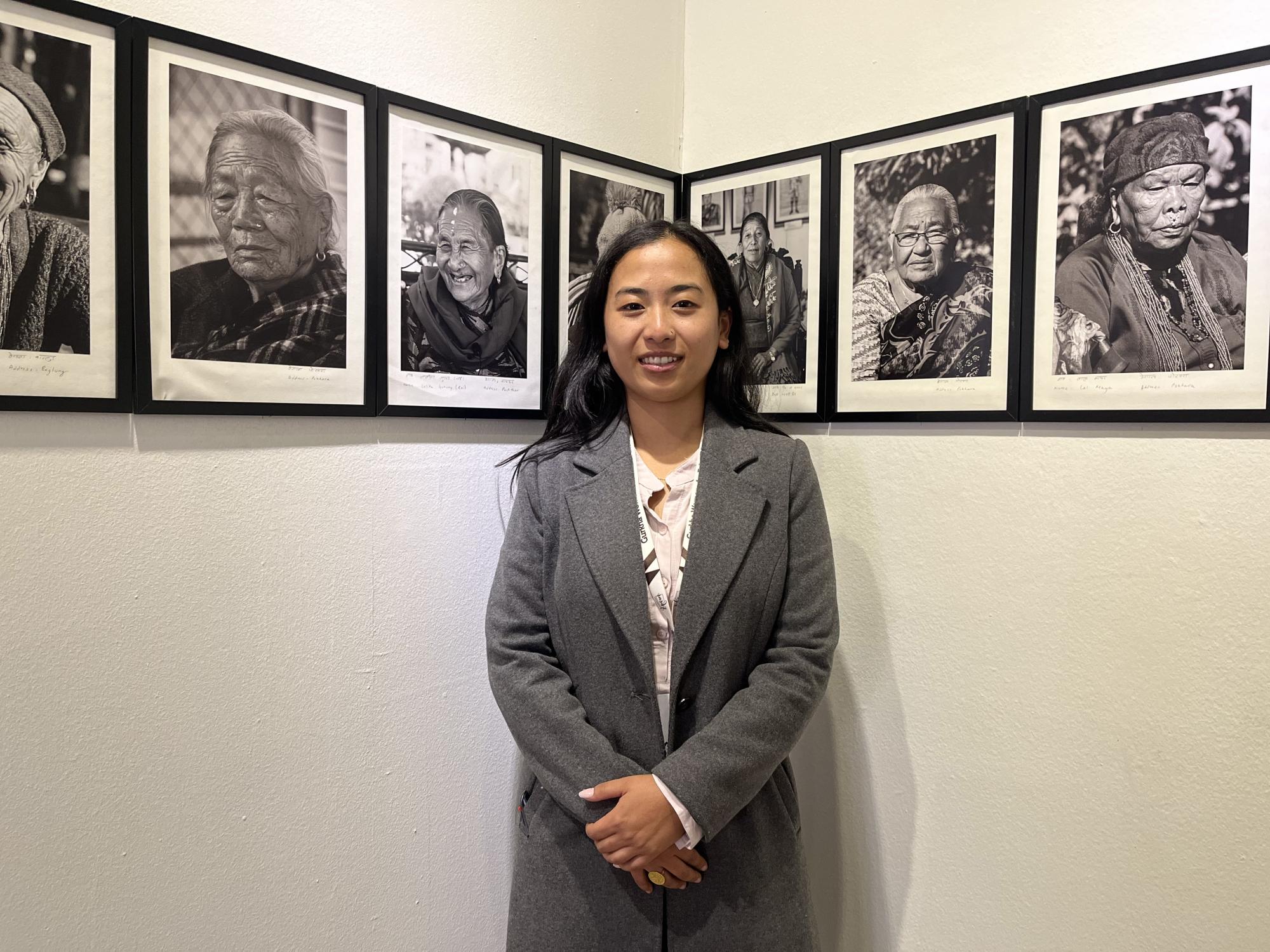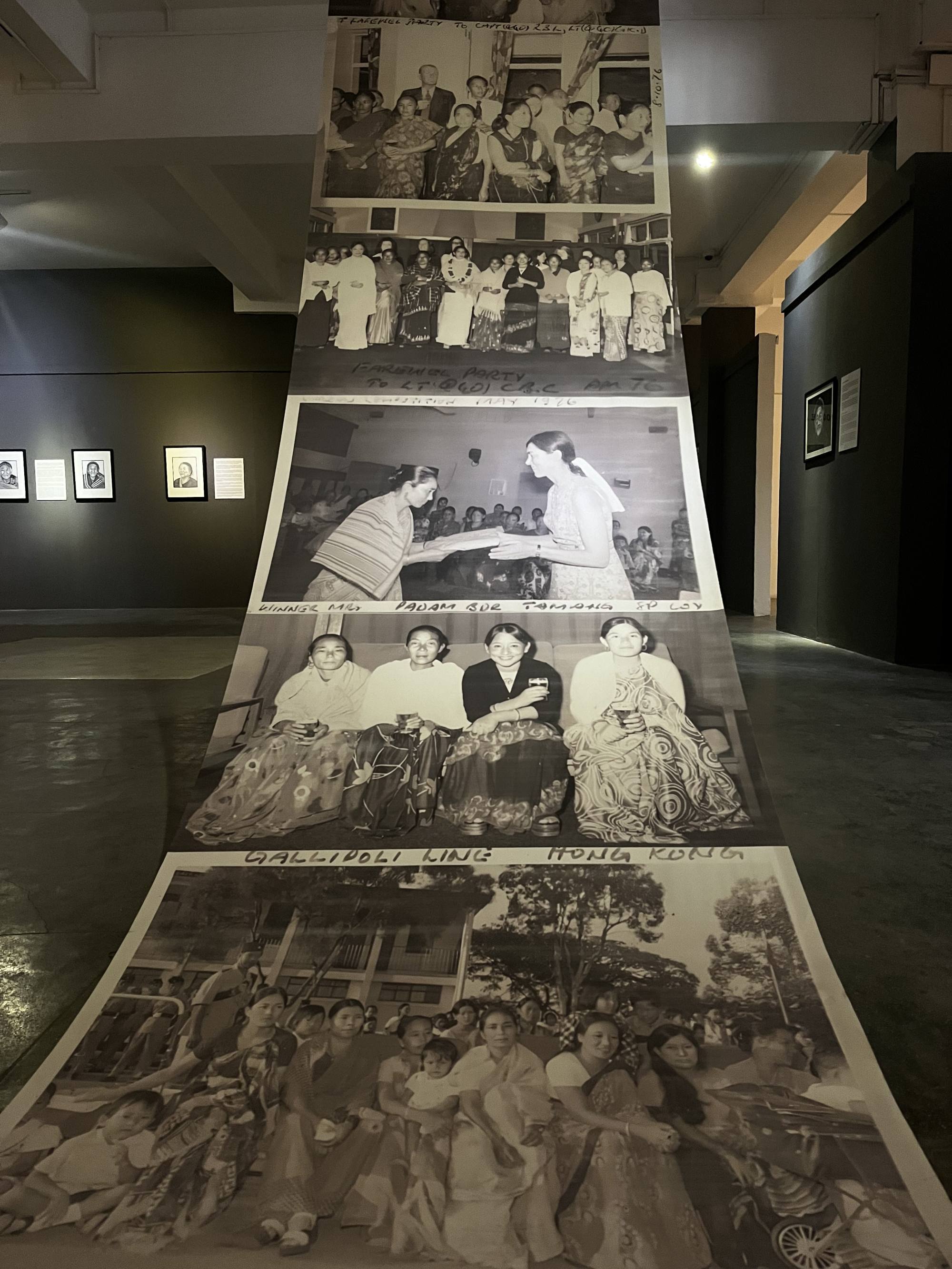
Gurkha granddaughter honours ‘invisible’ wives of Nepali soldiers in British army through art
- Suzana Shrish’s art exhibition in Kathmandu reveals the hidden strength and sacrifices of Gurkha wives
- The project aims to integrate women’s experiences into the Gurkha community’s history, challenging the traditional soldier-centric narratives
Dil Kumari Gurung was 14 when she married a Gurkha army man and followed him to India at the age of 23. Living in a foreign land “was not all about comfort” and money was scarce.
Lal Kumari Pun’s husband joined the army after their marriage, but she stayed behind in Nepal to care for the family. It was a struggle-filled life, she recalled, though her husband’s letters and the parcels he sent from abroad helped her carry on.
Both women, now in their 80s, are among the thousands of army wives who either followed their husbands abroad or stayed in Nepal, making significant socio-economic contributions that have been overshadowed in the history books by the gallantry of the Gurkha men.
Those women and their stories are now part of an art project helmed by Suzana Shrish, a Gurkha granddaughter, who aims to shift the focus and honour Gurkha women.

“We study about gender equality and equity but that’s missing in our own communities,” said Shrish, 29, a creative artist. “I wanted to bring these components into my work.”
Impressed by their bravery during the 1814-1816 Anglo-Nepal War, the British started recruiting the Gurkhas in 1815. Since then, the Gurkhas have fought several wars including World War I and World War II and were stationed in colonies, including Hong Kong. The Gurkha contingent was split between British and Indian armies after India’s independence in 1947.
Shrish said both her grandfathers served in the Gurkha regiments in India and the UK, and she grew up hearing stories from her grandmothers about their struggles in Nepal and foreign lands. While Shrish’s father was documenting the stories of Gurkha soldiers for a book, she realised the stories of women in those households were often missing.
Though the Gurkha men are known worldwide for their battlefield bravery, their spouses have largely remained under the men’s shadow, devoid of their individual identities. British academic Vron Ware, who has written several books on race and gender, described them as “invisible counterparts”.

Sanjay Sharma, a researcher who has worked with Gurkha women, said the gendered nature of militarisation emphasises the heroism of men. Meanwhile, Gurkha women are seen as “passive followers” who move along with their husbands or “left behind” wives who stay back to care for the family.
“They’re not invisible,” Sharma said. “They’re visible yet ignored. Their stories are ignored. Their struggles are ignored.”
But in recent years, Sharma said people from the Gurkha community are trying to change the narrative and “bring women from the margins to the mainstream”. And Shrish’s art project is a step in that direction.
In late November, Shrish’s exhibition in Kathmandu showcased stories of nearly 50 Gurkha women. The sketches of women in pencil on paper, as well as portrait shots, underscored their lives within and beyond their Gurkha identity.
Amanda Chisholm, a reader in gender and security at King’s College London and author of The Gendered and Colonial Lives of Gurkhas in Private Security: From Military to Market, said that Gurkha women’s contributions – while valuable – are often invisible because they are outside public economic and political spaces.

“Global economies and politics cannot happen without the work done in homes that raises children, cares for the elderly and teaches communities,” she said. “These are vital to functioning states and regional [and] global economies.”
Between 2020 and 2022, Shrish documented the lives of dozens of Gurkha women from Nepal’s different districts, some of whom, including Pun, have now died. She spoke with women over the age of 70, particularly those who had witnessed wars.
She said most of her conversations with the women had similar themes. Those who stayed in Nepal spoke of their frugal lifestyle that was mostly dependent on the money their husbands remitted and later their pensions. Having to take care of their families, the women were empowered as decision-makers in their households. The surviving women shared with Shrish the challenges they faced in foreign lands, as well as their achievements.
Sharma said Gurkha women have largely been seen as only mothers and wives instead of independent individuals, some of whom he chronicles in an Instagram account, @gurkhawomen. He noted that these women have contributed as teachers and nurses at home and abroad, such as Shobha Kumari Chhetri, who worked as a midwife in the British army from the late 1930s.
Lila Kumari Thulung, whose husband fought in the Falklands War, said Gurkha women were taught to read, write and sew in the cantonments. In her 80s now, she said she got a teaching job in Brunei and earned more than her husband in Hong Kong while he was stationed there.
“The patriarchal mindset is guided by the idea of masculinity and bravery, and the martial race theory focused on the narrative of bravery,” Sharma said, referring to the idea that certain castes are warlike. “So the women’s stories were overshadowed because they didn’t fit in the patriarchal and military paradigm.”

Shrish hoped that the stories of the Gurkha women would help expand beyond the patriarchal-dominant narrative while attempting to position them in the country’s social memory. She plans to take the project across Nepal and the UK so people remember the women who stood alongside the Gurkha soldiers, not behind them.
“I was profoundly amazed by the resilience of the Gurkha women and the impact they had in their households and beyond,” Shrish said. “I treated their stories as art pieces so that they reach more people.”

